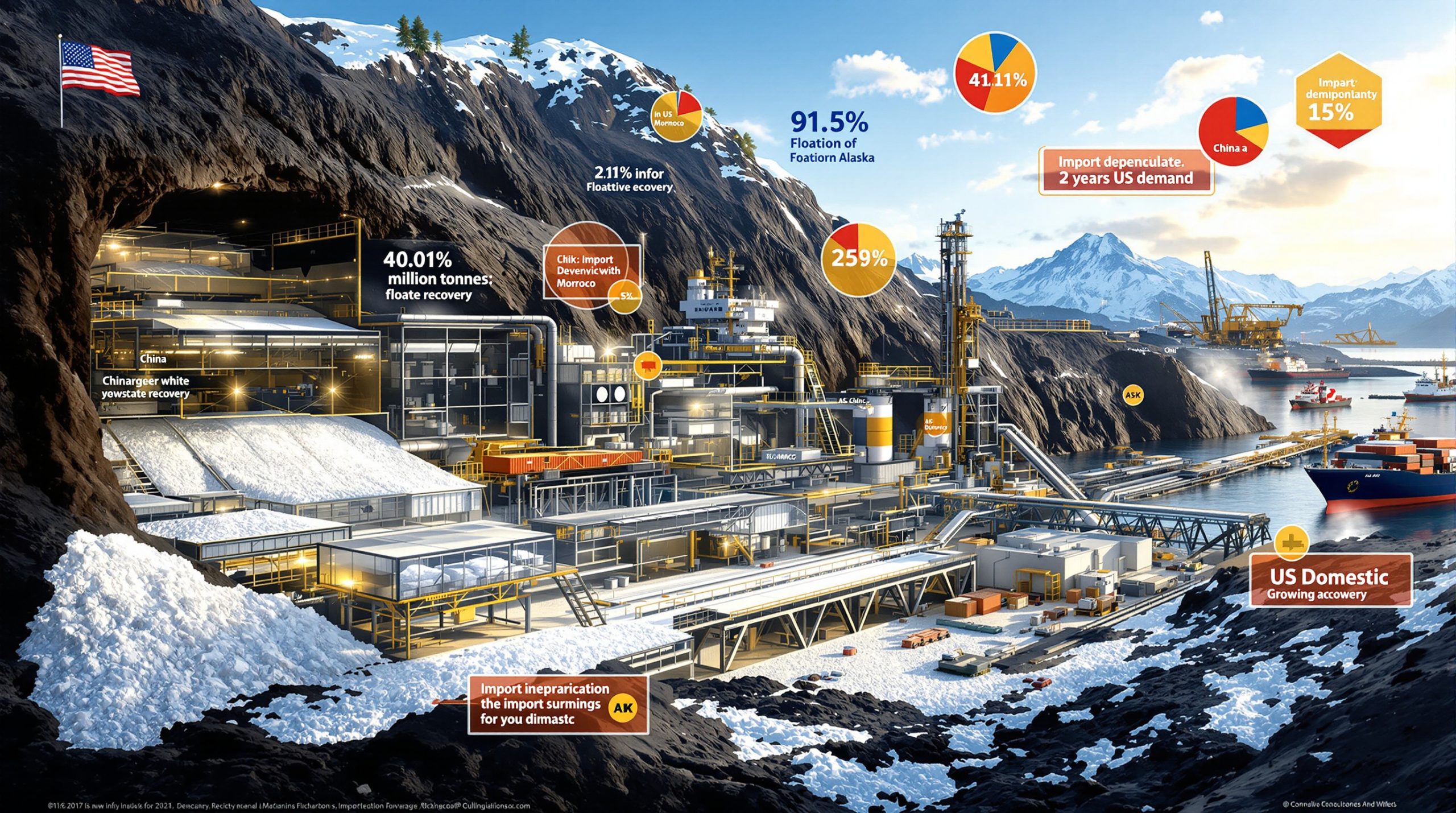Understanding Today's Oil Market Dynamics
The global oil market continues to experience significant fluctuations driven by a complex interplay of geopolitical tensions, supply decisions, and economic indicators. With benchmark crude varieties showing notable movements in recent trading sessions, investors and consumers alike are closely monitoring these developments as they ripple through the global economy.
Recent price resilience has surprised many analysts, particularly following OPEC+ production adjustments that initially threatened market stability. This resilience suggests underlying strength in global demand fundamentals despite various headwinds facing the energy sector.
How Are Major Oil Benchmarks Performing?
WTI Crude Oil Performance
West Texas Intermediate (WTI) crude is currently trading at $59.11 per barrel, showing a 3.47% increase (+$1.98) in recent trading. As the U.S. benchmark, WTI's price movements directly impact American energy costs and production decisions across the domestic oil industry.
The relative strength of WTI reflects ongoing efficiency improvements in U.S. shale operations, though industry analysts caution that production plateaus may be approaching in key basins.
Brent Crude Oil Performance
Brent crude, the international benchmark influencing approximately two-thirds of global oil supplies, is trading at $62.14 per barrel, up 3.17% (+$1.91). This key global marker serves as the pricing reference for most oil stocks impact outside North America.
Morgan Stanley recently revised its Brent crude forecast downward to $62.50 per barrel, citing potential oversupply concerns as OPEC+ adjusts its production strategy.
Other Important Benchmarks
Global oil markets feature several regional benchmarks that reflect local supply-demand dynamics:
- Murban Crude: $62.39 (+4.05%) – UAE's flagship crude grade
- Louisiana Light: $61.92 (+0.03%) – Gulf Coast sweet crude benchmark
- Bonny Light: $78.62 (-2.84% over 260 days) – Nigerian light sweet crude
- OPEC Basket: $61.80 (-7.10% over 5 days) – Average of prices from OPEC member countries
These differential movements highlight the regional variations in oil markets, with quality and transportation accessibility playing significant roles in pricing.
What's Driving Current Oil Price Movements?
OPEC+ Production Decisions
Recent OPEC+ announcements regarding production quotas initially shocked markets but appear to have been absorbed with surprising resilience. The organization's decision to accelerate the rollback of output cuts by planning to increase production by approximately 500,000 barrels per day in Q3 2025 represents a significant strategic pivot.
This policy adjustment signals the group's attempt to balance market stability against loss of market share to non-OPEC producers, particularly U.S. shale operators.
Market Reaction to Supply Changes
Despite initial concerns about oversupply, oil prices have demonstrated remarkable resilience, with traders actively buying recent dips. This unexpected market strength suggests:
- Confidence in underlying demand growth
- Recognition of potential production constraints in non-OPEC countries
- Skepticism about whether announced OPEC+ increases will fully materialize
- Ongoing geopolitical risk premiums in several producing regions
The market's ability to absorb the news of increased future production without sustained price declines points to structural support factors that transcend short-term supply fluctuations.
Financial Institution Forecasts
Major financial institutions have responded to recent market developments by adjusting their oil price forecasts:
| Institution | Previous Brent Forecast | Revised Brent Forecast | Rationale |
|---|---|---|---|
| Morgan Stanley | $72.00/bbl | $62.50/bbl | Potential oversupply |
| Goldman Sachs | $76.00/bbl | $65.00/bbl | OPEC+ production increases |
| JPMorgan | $73.00/bbl | $68.00/bbl | Demand concerns |
These revisions reflect a more cautious outlook as analysts incorporate new supply projections and evaluate economic headwinds, including potential impacts from trade tensions and tariff policies.
How Are Regional Oil Markets Performing?
North American Oil Markets
North American crude varieties show mixed performance across different production regions:
- WTI Crude: $59.11 (+3.47%) – U.S. benchmark
- Louisiana Light: $61.92 (+0.03%) – Gulf Coast sweet crude
- West Texas Sour: $53.57 (+0.15%) – Higher sulfur content variant
- Eagle Ford: $54.77 (+0.15%) – Texas light sweet crude
- Canadian Crude Index: $53.57 (-2.24% over 707 days) – Canadian benchmark
The U.S. House Committee's efforts to advance federal land drilling expansions could potentially increase domestic production, adding another variable to North American supply projections.
Middle Eastern and African Oil Markets
Key export grades from these regions show varying price movements:
- Murban Crude: $62.39 (+4.05%) – UAE's light crude benchmark
- Iran Heavy: $60.48 (-0.71%) – Medium-heavy sour crude
- Basra Light: $71.69 (-4.78%) – Iraqi medium sour crude
- Saharan Blend: $61.57 (-0.36%) – Algerian light sweet crude
- Bonny Light: $78.62 (-2.84%) – Nigerian premium light sweet crude
Saudi-India crude supply disagreements have reportedly delayed joint refinery plans, highlighting the complex diplomatic aspects of oil trade relationships in the region.
Canadian Oil Varieties
Canadian crude grades continue to trade at significant discounts to WTI, reflecting ongoing transportation constraints:
- Western Canadian Select: $44.78 (-2.53%) – Heavy sour benchmark
- Canadian Condensate: $59.28 (-1.92%) – Ultra-light crude
- Premium Synthetic: $57.53 (-1.98%) – Upgraded synthetic crude
- Sweet Crude: $51.38 (-2.21%) – Light sweet crude
The persistent discounts for Canadian grades underscore the infrastructure challenges facing Canadian producers, with pipeline capacity limitations continuing to impact pricing.
What Factors Are Influencing Future Oil Prices?
Geopolitical Tensions
Ongoing conflicts and diplomatic tensions in key oil-producing regions continue to create uncertainty in global market dynamics explained:
- Venezuela's reliance on Chinese oil imports amid U.S. sanctions creates potential supply vulnerability
- Middle East tensions affect shipping routes and insurance costs
- Russia-Ukraine conflict impacts European energy security policies
- Iran sanctions compliance issues create market uncertainty
These geopolitical factors can rapidly shift supply expectations and price trajectories, often introducing risk premiums in futures markets.
Trade Relations and Tariffs
Recent developments in international trade policies, particularly potential tariffs, have introduced new variables into market calculations. Trump administration tariffs could potentially cost energy firms approximately $1.5 billion annually, according to industry predictions for 2025.
"The proposed tariff structure risks inflating energy costs by 3-5% across the supply chain, impacting not just direct imports but also equipment and materials used in domestic production," noted an industry report.
Major corporations like Ford have already felt the impact of trade tensions, with Q1 net income plunging to $471 million amid rising input costs and market uncertainties.
Production Capacity and Peaking Concerns
Industry analysts note that U.S. oil production may be approaching its peak, potentially altering the global supply-demand balance in coming years:
- Peak U.S. shale output projected by 2026 could tighten global balances
- Permian Basin output growth (+8% year-over-year) currently offsets some geopolitical disruptions
- Mature field decline rates accelerating in conventional production areas
- Investment patterns shifting toward maintaining rather than expanding capacity
This structural factor could provide underlying support for prices despite current volatility, as replacement of declining production becomes more challenging across the industry.
Economic Growth Projections
The International Monetary Fund has reduced growth forecasts for Middle Eastern oil exporters as prices have declined, highlighting the interconnection between oil markets and broader economic performance.
The IMF projects a 1.2% GDP reduction for Gulf Cooperation Council nations compared to previous forecasts, illustrating the fiscal challenges facing oil-dependent economies in a moderating price environment.
How Are Energy Companies Responding?
Major Oil Company Performance
Leading energy corporations are navigating the current price environment with varying strategies:
- ExxonMobil reported quarterly success driven by Permian Basin growth, with production increases offsetting price softness
- Chevron met Q1 profit estimates helped by improved refining margins, demonstrating the value of integrated operations
- Shell continues share buybacks following strong Q1 earnings, returning value to shareholders while studying potential acquisitions
These companies are increasingly focusing on operational efficiency and capital discipline rather than aggressive production growth, reflecting a maturation of the industry's approach to volatile commodities market insights.
Refining and Downstream Operations
Refining margins have become increasingly important to overall profitability as crude prices fluctuate:
| Company | Refining Margin Change | Impact on Earnings |
|---|---|---|
| Chevron | +15% year-over-year | $420M earnings boost |
| ExxonMobil | +8% year-over-year | $280M earnings contribution |
| Marathon | +12% year-over-year | $340M positive impact |
Companies with integrated operations can partially offset upstream challenges through stronger downstream performance, particularly when crack spreads (the difference between crude prices and refined product prices) widen during periods of volatility.
Refinery utilization rates and efficiency improvements have become critical profitability drivers for integrated energy companies, often compensating for weakness in exploration and production segments.
What Do Oil Prices Mean for Consumers?
Gasoline Prices
Current gasoline futures are trading at $2.061 per gallon, up 1.89%. This benchmark influences what consumers ultimately pay at the pump, though with regional variations based on taxes and local market conditions.
While gasoline prices typically follow crude oil trends, refining capacity constraints, seasonal blend requirements, and transportation logistics can create temporary disconnections between crude and retail fuel prices.
Natural Gas Prices
Natural gas is currently trading at $3.456 per MMBtu, down 2.65%. This energy source, while distinct from oil, often shows correlated price movements and affects overall energy costs for households and businesses.
U.S. LNG exports hit a record 12.7 Bcf/d in Q1 2025, with exports to Europe rising 20% year-over-year. This growing export market is creating a stronger link between domestic and international natural gas prices, reducing the historical isolation of the U.S. market.
What's the Outlook for Oil Prices?
Short-Term Price Projections
Market analysts suggest that oil prices today may experience continued volatility in the near term as traders digest OPEC+ decisions and assess global demand trends. Recent price rebounds indicate underlying support despite supply concerns.
Key short-term factors to watch include:
- Weekly inventory reports from the EIA
- OPEC+ compliance with announced production targets
- Fuel demand indicators from major consuming nations
- Refinery maintenance schedules and utilization rates
- Hurricane season impacts on Gulf Coast infrastructure
These factors will drive price movements in the weeks and months ahead, potentially creating both risks and opportunities for market participants.
Long-Term Market Fundamentals
Structural factors including peak production concerns, energy transition investments, and shifting global demand patterns will likely shape longer-term price trajectories beyond immediate market fluctuations.
Shell's exploration of potential acquisitions, including studying a BP bid for renewables synergy, illustrates how major energy companies are positioning themselves for an evolving energy landscape while maintaining their core oil and gas businesses.
The long-term impact of EV adoption on oil demand remains a critical uncertainty, with Ford's $800 million EV division loss highlighting the challenging economics of the transition. These structural shifts in transportation energy use will gradually reshape global oil demand patterns over the coming decade.
FAQ About Current Oil Prices
Why are oil prices rising despite OPEC+ increasing production?
Market participants appear to be focusing on underlying demand strength and potential production constraints rather than immediate supply increases. This reflects confidence in the market's ability to absorb additional barrels and skepticism about whether announced production increases will fully materialize.
Additionally, traders are increasingly factoring in the likelihood of U.S. shale production plateaus, which could limit non-OPEC supply growth despite current price levels that historically would have stimulated more drilling activity.
How do current oil prices compare to historical averages?
While current prices represent a decline from recent peaks, they remain within historical norms when adjusted for inflation. The market has demonstrated remarkable adaptability to various price environments over time, as shown in the latest OilPrice.com market analysis.
| Period | Avg. Brent Price (Inflation-Adjusted to 2024) |
|---|---|
| 1970s | $38.75/bbl |
| 1980s | $70.12/bbl |
| 1990s | $42.33/bbl |
| 2000s | $81.57/bbl |
| 2010s | $85.24/bbl |
| 2020-Present | $73.42/bbl |
This historical context shows that today's prices, while below recent highs, remain well above the lows seen during previous market downturns.
How do oil futures markets influence current spot prices?
Futures trading provides forward price discovery and allows market participants to hedge against price movements. Current futures positioning suggests mixed sentiment about price direction in coming months.
The relationship between futures and spot prices reflects market expectations about:
- Storage costs and availability
- Interest rates and opportunity costs
- Expected future supply-demand balance
- Hedging activities by producers and consumers
This complex interplay creates the "term structure" of oil prices, which can be in either contango (future prices higher than spot) or backwardation (spot prices higher than futures), each signaling different market conditions.
What impact do oil prices have on inflation?
Energy costs represent a significant component of consumer price indices. Current oil price movements may help moderate inflation pressures if they remain stable or trend lower.
Direct energy costs typically account for 7-9% of consumer spending in developed economies, but the indirect effects through transportation, manufacturing, and agriculture can multiply the impact of oil price changes on overall inflation rates.
How are alternative energy investments affected by oil price movements?
Lower oil prices can reduce the comparative economic advantage of some renewable energy projects, though long-term energy transition investments typically consider price cycles beyond current market conditions.
Duke Energy's Q1 profit surge (+15%) from rate hikes and demand growth demonstrates how utilities with renewable portfolios can perform well even in periods of oil price volatility, as their business models are increasingly decoupled from fossil fuel economics.
Oil Market Outlook: Balancing Multiple Forces
Oil prices today reflect a market responding to multiple competing forces, from OPEC+ production decisions to geopolitical investor strategies and economic indicators. The resilience shown by prices despite increased supply projections suggests underlying strength in global demand fundamentals.
The energy transition continues to advance, with major oil companies increasingly diversifying their portfolios while maintaining their core hydrocarbon businesses. This balancing act between traditional and emerging energy sources will shape investment patterns and price dynamics for years to come.
As the market navigates these cross-currents, traders, consumers, and policy makers will continue monitoring price movements closely, recognizing that today's oil market reflects both cyclical volatility and structural change in the global energy landscape.
Disclaimer: Oil price forecasts involve inherent uncertainty. The projections discussed in this article represent analysts' current assessments based on available information and should not be considered investment advice. Market conditions can change rapidly due to unforeseen events or policy shifts.
Ready to Discover the Next Resource Market Opportunity?
Stay ahead of the curve with Discovery Alert's proprietary Discovery IQ model, which provides real-time notifications of significant ASX mineral discoveries and market movements. Visit our discoveries page to understand how major mineral finds can lead to substantial investment returns and position yourself for success in the resources sector.




